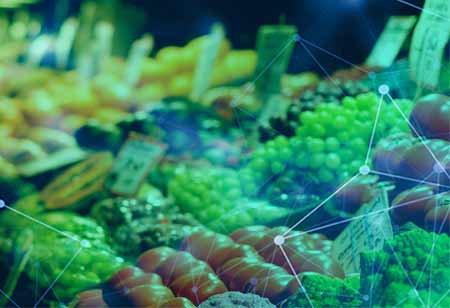Thank you for Subscribing to Food Business Review Weekly Brief
Robotics Handling Hindrances in Food Processing Industry.
Industrial and collaborative robots are quickly used in primary and secondary processing applications of the food sector.

By
Food Business Review | Tuesday, January 11, 2022
Stay ahead of the industry with exclusive feature stories on the top companies, expert insights and the latest news delivered straight to your inbox. Subscribe today.

Robots dispensed in the food sector should be built to fulfill these specifications, which can be pricey for the firms developing them.
FREMONT, CA: Industrial and collaborative robots are quickly used in primary and secondary processing applications of the food sector. Robotic automation has penetrated many industries worldwide, with the food processing industry being one of the last frontiers for robotic automation.
Both industrial and collaborative robots can be dispersed throughout the food supply chain. On the other hand, food processing has traditionally been the toughest to automate. Recent technical advancements, however, are conquering these challenges.
The food processing sector has several problems that limit the adoption of automation and robotics at various phases of the conversion process. First, food manufacturers often work with a wide range of raw materials. Historically, mixing ingredients by hand handling and weighing is essential for primary food preparation.
Another critical consideration is the intellectual property related to a particular item and cooking secrets familiar only to a select few. Businesses are uncertain about sharing sensitive information with a digital system, prone to failures and data theft. Finally, washing is a crucial requirement for food-handling technologies. Sanitation of any surface that comes into touch with food is required by law, commonly done with harsh chemicals. Robots dispensed in the food sector must be created to fulfill these specifications, which can be expensive for the firms developing them. Therefore, both capital and operating expenses are substantial.
Role of Robotics in Overcoming These Obstacles
High-precision robotics, computer vision systems, and machine learning are becoming more common as inventive and flexible ways to enhance ingredient handling processes. For instance, one electronic manufacturing firm has advanced an effective ingredient handling system that includes smart containers where each ingredient is decanted and stored. The robot holds the contents out of the container and weighs them in a robotic blender as per the recipe entered into the system. With a weighing precision of +/- 0.1 grams, the system can stock 500+ ingredients. In addition, these containers incorporate a built-in cleaning mechanism and can hold many recipes. Also, the owner can program the recipes, ensuring total confidentiality and intellectual property protection.
See Also : Food Processing Solutions Companies






